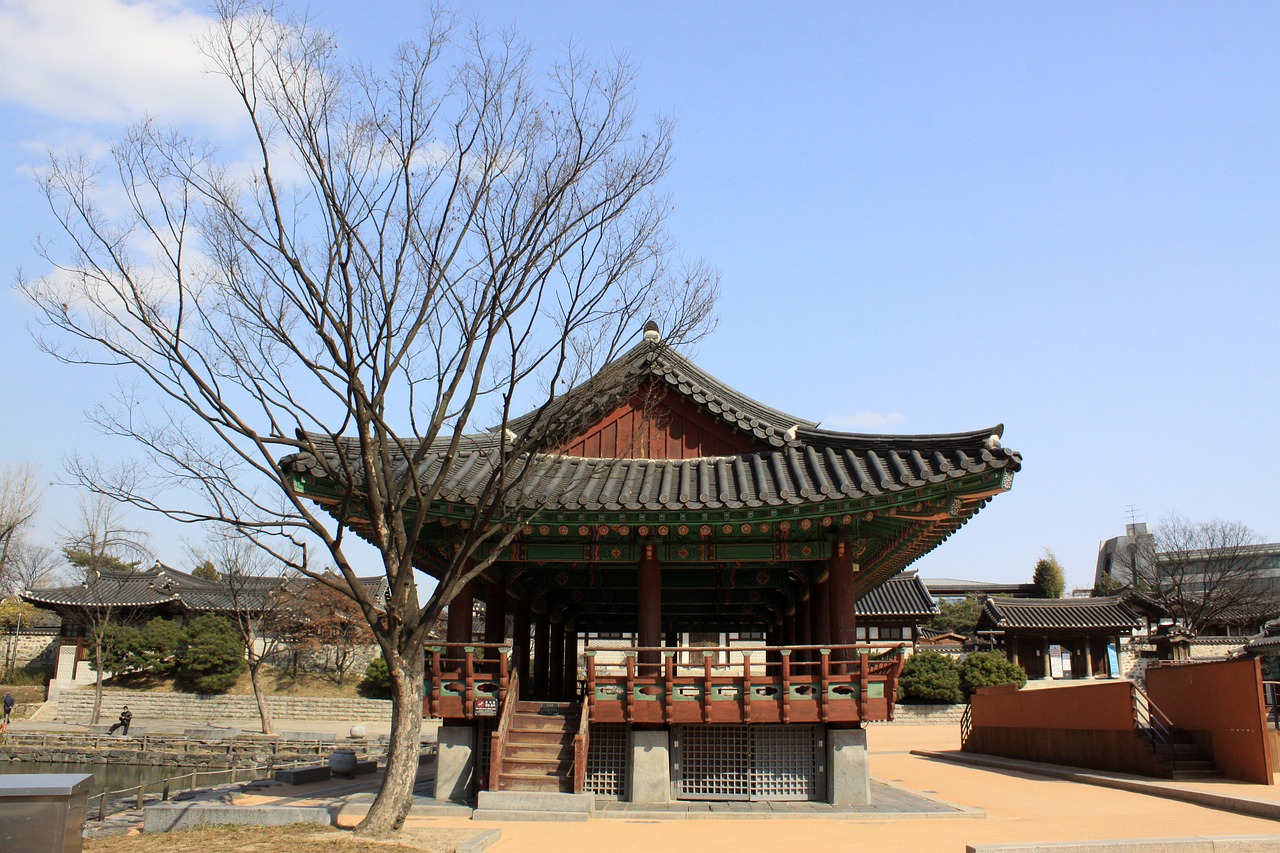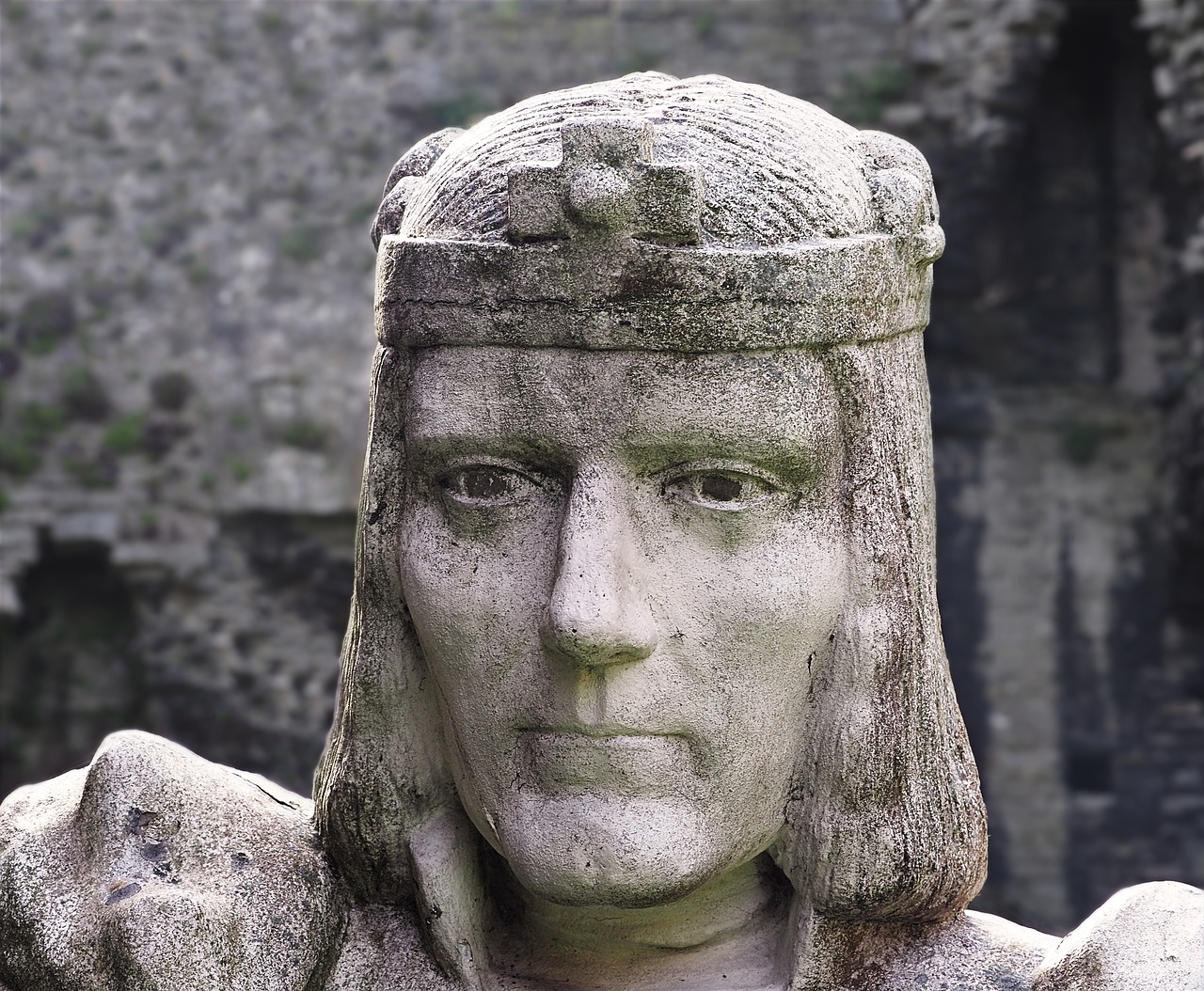The Discovery of the Ancient Chinese Dynasties
Embark on a captivating journey through time as we delve into the fascinating world of the ancient Chinese dynasties. These dynasties, spanning from the Xia to the Qing, hold the key to unlocking the mysteries of Chinese culture, society, and governance. Each dynasty leaves a unique imprint on history, shaping the course of a civilization that continues to thrive to this day.
As we unravel the layers of the past, we encounter the enigmatic Xia Dynasty, the subject of debate among historians. Was it a myth or a reality? The Xia Dynasty's existence raises questions that challenge our understanding of China's early history, inviting us to explore the blurred lines between myth and truth.
The Shang Dynasty emerges as a beacon of innovation during the Bronze Age, known for its advancements in metallurgy, script, social structure, and religious practices. Their legacy echoes through the ages, showcasing a society that thrived on creativity and craftsmanship.
Transitioning to the Zhou Dynasty, we witness the establishment of a feudal system intertwined with philosophical legacies. Concepts such as the Mandate of Heaven, Confucianism, and Daoism take root, shaping the moral and political landscape of ancient China.
The Qin Dynasty's brief yet impactful rule brings about unification, the construction of the Great Wall, and the implementation of Legalist policies. Their legacy stands as a testament to the power of centralization and governance in shaping a cohesive empire.
Enter the Han Dynasty, a time of cultural flourishing marked by advancements in trade along the Silk Road, scientific discoveries, and the nurturing of arts and literature. Their legacy paves the way for a golden age of innovation and creativity in Chinese history.
The Tang Dynasty shines as a beacon of Chinese civilization's golden age, boasting cosmopolitan culture, economic prosperity, technological advancements, and the widespread influence of Buddhism. Their achievements resonate through the annals of history, symbolizing a period of unparalleled cultural exchange and progress.
Transitioning to the Ming Dynasty, we witness maritime expeditions led by Zheng He, the grandeur of the Forbidden City, and the artistic achievements in porcelain and literature. The Ming Dynasty's legacy embodies a harmonious blend of exploration, artistry, and cultural refinement.

Introduction to Chinese Dynasties
Chinese dynasties have played a pivotal role in shaping the rich tapestry of history, culture, and governance in China. These dynasties were not just rulers but the architects of a civilization that stood the test of time. Each era brought its own unique characteristics and contributions, leaving an indelible mark on Chinese society. From the Xia to the Qing, these dynasties paved the way for the China we know today.
When we talk about Chinese dynasties, we are referring to a succession of rulers from the same family line who held power and authority over China for centuries. These dynasties were not just about governance; they were about legacy, tradition, and the evolution of a nation. The concept of dynasties in Chinese history goes beyond mere rulership; it represents a continuity of culture, values, and identity.
Each dynasty brought its own set of innovations, challenges, and transformations that shaped the course of Chinese history. From the Xia Dynasty, shrouded in myth and mystery, to the Ming Dynasty, known for its maritime expeditions and artistic achievements, Chinese dynasties have left an enduring legacy that continues to resonate in modern China.
As we delve into the world of ancient Chinese dynasties, we embark on a journey through time, exploring the rise and fall of empires, the clash of ideologies, and the relentless pursuit of power and glory. Join us as we unravel the enigmatic tales of the past and discover the profound impact of the ancient Chinese dynasties on the world as we know it.

Xia Dynasty: Myth or Reality?
Exploring the rich history and significance of the ancient Chinese dynasties, from the Xia to the Qing, and their impact on Chinese culture, society, and governance.
An overview of the concept of dynasties in Chinese history, their role in shaping the country's development, and the key characteristics that define each era.
The Xia Dynasty, often regarded as the first recorded dynasty in Chinese history, has long been a subject of debate among historians. The existence of the Xia Dynasty is shrouded in mystery, with some scholars considering it more of a myth than a reality. The lack of concrete archaeological evidence has fueled the skepticism surrounding this ancient dynasty. Despite the uncertainty, the Xia Dynasty holds a significant place in Chinese folklore and historical narratives, symbolizing the dawn of civilization in the region.

Shang Dynasty: Bronze Age Innovators
The Shang Dynasty, a pivotal period in ancient Chinese history, is renowned for its innovative advancements during the Bronze Age. This era marked a significant leap forward in metallurgy, with the Shang people mastering the art of crafting bronze artifacts that showcased intricate designs and exquisite craftsmanship. The development of bronze metallurgy not only revolutionized the material culture of the time but also played a crucial role in shaping the social and economic structures of Shang society.
One of the most fascinating aspects of the Shang Dynasty is its use of oracle bone script, an early form of Chinese writing engraved on animal bones or turtle shells. These inscriptions provide valuable insights into the religious beliefs, political practices, and social customs of the Shang people. The deciphering of oracle bone inscriptions has greatly enhanced our understanding of this ancient civilization and its complex rituals and governance systems.
Furthermore, the Shang Dynasty is known for its hierarchical social structure, with the king at the pinnacle of power, followed by nobles, artisans, and peasants. This stratified system not only facilitated the efficient organization of labor and resources but also reinforced the authority of the ruling elite. The elaborate burial practices and ritual ceremonies observed by the Shang society reflect the importance placed on ancestral veneration and the afterlife.
In addition to its material and social innovations, the Shang Dynasty made significant contributions to religious practices, with the worship of ancestral spirits and divination playing a central role in daily life. The diviners, or shamans, acted as intermediaries between the human and spiritual realms, using oracle bones to communicate with the ancestors and seek guidance on important matters such as agricultural activities, warfare, and governance.
Overall, the Shang Dynasty's legacy as Bronze Age innovators continues to captivate historians and archaeologists, shedding light on the technological prowess, artistic achievements, and cultural sophistication of ancient China. The enduring impact of the Shang Dynasty reverberates through the centuries, shaping the cultural landscape of modern China and inspiring further exploration into the rich tapestry of its past.

Zhou Dynasty: Feudal System and Philosophical Legacy
The Zhou Dynasty, one of the longest-reigning dynasties in Chinese history, left a profound impact on the country's development through its feudal system and philosophical legacy. During the Zhou Dynasty, China was divided into multiple states ruled by regional lords who pledged allegiance to the central king. This feudal system allowed for greater autonomy and local governance but also led to periods of conflict and power struggles among the states.
One of the key concepts introduced during the Zhou Dynasty was the Mandate of Heaven, which asserted that the ruler's right to govern was granted by divine approval. This concept not only legitimized the authority of the king but also established a moral framework for governance. The idea of the Mandate of Heaven influenced Chinese political thought for centuries to come and became a central tenet in the Chinese political philosophy.
Moreover, the Zhou Dynasty was a period of significant intellectual and philosophical development in China. It was during this time that Confucianism and Daoism, two of the most influential philosophical schools in Chinese history, emerged. Confucianism emphasized the importance of ethics, morality, and social harmony, while Daoism focused on the natural order and the balance between humans and nature.
Additionally, the Zhou Dynasty witnessed the division into the Western Zhou period, characterized by relative stability and prosperity, and the Eastern Zhou period, marked by political turmoil and social unrest. This division reflected the changing dynamics of power and governance within the Zhou state and set the stage for the subsequent dynastic transitions in Chinese history.

Qin Dynasty: Unification and Legalism
The Qin Dynasty, lasting from 221 to 206 BC, is renowned for its remarkable achievements in unifying China under the rule of Emperor Qin Shi Huang. This period marked a significant turning point in Chinese history, as it brought an end to centuries of disunity and warfare among the warring states. The unification of China by the Qin Dynasty laid the foundation for the establishment of a centralized imperial system that would shape Chinese governance for centuries to come.
One of the key ideologies that defined the Qin Dynasty was Legalism, a political philosophy that emphasized strict laws, centralized authority, and harsh punishment for disobedience. Legalist principles were instrumental in consolidating the power of the emperor and maintaining social order throughout the empire. The implementation of Legalist policies by Emperor Qin Shi Huang enabled the Qin Dynasty to establish a strong centralized government and effectively control the vast territories of China.
Emperor Qin Shi Huang is also credited with several ambitious projects that left a lasting impact on Chinese history. Perhaps the most famous of these projects is the construction of the Great Wall of China, a monumental feat of engineering aimed at protecting the northern borders of the empire from invasions. The standardization of writing and currency during the Qin Dynasty further contributed to the unification of the empire and facilitated communication and trade among different regions.
Despite its relatively short duration, the Qin Dynasty left a lasting legacy in Chinese history through its emphasis on centralized authority, administrative efficiency, and the promotion of Legalist principles. The achievements of the Qin Dynasty paved the way for the subsequent Han Dynasty, which built upon the foundations laid by Qin Shi Huang to further develop Chinese culture, governance, and society.

Han Dynasty: Silk Road and Cultural Flourishing
Exploring the rich history and significance of the ancient Chinese dynasties, from the Xia to the Qing, and their impact on Chinese culture, society, and governance.
An overview of the concept of dynasties in Chinese history, their role in shaping the country's development, and the key characteristics that define each era.
Delving into the mysteries surrounding the Xia Dynasty, China's first recorded dynasty, and the ongoing debates among historians about its existence and influence.
Exploring the achievements of the Shang Dynasty, known for its advancements in bronze metallurgy, oracle bone script, social structure, and religious practices.
Examining the Zhou Dynasty's feudal system, the Mandate of Heaven concept, the emergence of Confucianism and Daoism, and the division into Western and Eastern Zhou periods.
Discussing the short but impactful rule of the Qin Dynasty, including the unification of China, the construction of the Great Wall, the standardization of writing, and the implementation of Legalist policies.
The Han Dynasty, often referred to as a period of cultural flourishing and economic prosperity, played a pivotal role in the development of the Silk Road. This vast network of trade routes facilitated the exchange of goods, ideas, and cultures between China and the Western regions, leading to significant advancements in science, technology, and the arts.
Under the Han Dynasty, the Silk Road became a symbol of connectivity and innovation, allowing for the transmission of silk, spices, and other valuable commodities. This trade route not only boosted the Chinese economy but also fostered cultural exchanges that enriched the artistic and intellectual landscape of both the East and the West.
Highlighting the achievements of the Tang Dynasty, including its cosmopolitan culture, economic prosperity, technological innovations, and the spread of Buddhism.
Examining the Ming Dynasty's maritime expeditions led by Zheng He, the construction of the Forbidden City, the development of blue and white porcelain, and the flourishing of Ming art and literature.
Q: What was the significance of the Silk Road during the Han Dynasty?
A: The Silk Road played a crucial role in fostering trade, cultural exchange, and technological advancements between East and West during the Han Dynasty.
Q: How did the Han Dynasty contribute to cultural flourishing?
A: The Han Dynasty promoted the arts, literature, and technological innovations, leading to a period of cultural prosperity and intellectual development.

Tang Dynasty: Golden Age of Chinese Civilization
The Tang Dynasty, often referred to as the Golden Age of Chinese Civilization, marked a period of remarkable achievements and cultural flourishing in ancient China. During this dynasty, which spanned from 618 to 907 AD, China experienced a golden era of cosmopolitan culture, economic prosperity, technological innovations, and the widespread influence of Buddhism.
One of the most notable aspects of the Tang Dynasty was its cosmopolitan culture, characterized by a vibrant blend of various ethnicities and traditions. This cultural diversity not only enriched Chinese society but also facilitated the exchange of ideas, technologies, and artistic expressions with neighboring regions and beyond.
Economically, the Tang Dynasty was a period of unprecedented prosperity and growth. The dynasty's effective governance, extensive trade networks, and agricultural advancements led to a flourishing economy that supported a burgeoning population and fostered urban development.
Technologically, the Tang Dynasty was a time of significant innovations and progress. The era witnessed advancements in various fields such as agriculture, engineering, medicine, and printing, laying the foundation for future developments in Chinese technology and science.
Buddhism played a crucial role in the Tang Dynasty, with the religion gaining widespread acceptance and patronage from the imperial court and the general population. The spread of Buddhism not only influenced art, architecture, and literature but also contributed to the development of a shared spiritual and moral framework across Chinese society.
The Tang Dynasty's legacy as a Golden Age of Chinese Civilization continues to inspire admiration and fascination for its achievements in culture, economy, technology, and spirituality. The era's enduring influence can be seen in modern China's cultural heritage and historical consciousness, reflecting a time of great prosperity and cultural vibrancy in ancient Chinese history.

Ming Dynasty: Maritime Expeditions and Artistic Achievements
The Ming Dynasty, known for its maritime expeditions and artistic achievements, marked a significant period in Chinese history. Led by the renowned explorer Zheng He, the Ming Dynasty undertook ambitious voyages that expanded China's influence and trade networks. These maritime expeditions, known as the Treasure Voyages, showcased China's naval prowess and established diplomatic relations with distant lands.
Aside from its maritime ventures, the Ming Dynasty also excelled in artistic endeavors. The era witnessed a flourishing of art and literature, with notable advancements in various forms of creative expression. Ming artisans perfected the craft of blue and white porcelain, creating exquisite ceramics that were highly sought after both in China and abroad. The Ming Dynasty also saw the construction of the magnificent Forbidden City in Beijing, a symbol of imperial power and architectural grandeur.
In addition to its artistic achievements, the Ming Dynasty made significant contributions to literature and scholarship. The era saw the publication of literary masterpieces such as "Journey to the West" and "Romance of the Three Kingdoms," which continue to be celebrated works of Chinese literature. Scholars during the Ming Dynasty made important advancements in various fields of study, further enriching China's intellectual heritage.
Overall, the Ming Dynasty's maritime expeditions and artistic achievements not only showcased China's cultural richness and creativity but also contributed to the country's global influence and prestige. The legacy of the Ming Dynasty continues to inspire admiration for its achievements in exploration, art, and scholarship.
1. What is the significance of the Xia Dynasty in Chinese history?
The Xia Dynasty is considered the first recorded dynasty in Chinese history, although its existence is still debated among historians. It is believed to have laid the foundation for Chinese civilization and established early forms of social and political organization.
2. How did the Shang Dynasty contribute to Chinese culture and society?
The Shang Dynasty is known for its advancements in bronze metallurgy, oracle bone script, and religious practices. It played a crucial role in shaping early Chinese civilization and setting the stage for subsequent dynasties.
3. What were the key achievements of the Han Dynasty?
The Han Dynasty is renowned for its expansion of the Silk Road, advancements in science and technology, and cultural flourishing. It established the foundation for many aspects of Chinese culture that endure to this day.
4. How did the Tang Dynasty contribute to the spread of Buddhism in China?
The Tang Dynasty's cosmopolitan culture and support for religious diversity facilitated the spread of Buddhism in China. The dynasty's tolerance and patronage of Buddhist institutions led to the religion's widespread influence in Chinese society.
5. What impact did the Ming Dynasty's maritime expeditions have on global trade?
The Ming Dynasty's maritime expeditions under Zheng He expanded China's trade networks and diplomatic relations with other countries. These voyages played a crucial role in enhancing China's influence in the region and beyond.
Frequently Asked Questions
- What are the major Chinese dynasties?
The major Chinese dynasties include the Xia, Shang, Zhou, Qin, Han, Tang, and Ming dynasties, each with its own unique contributions to Chinese history and culture.
- Was the Xia Dynasty real or a myth?
The existence of the Xia Dynasty, China's first recorded dynasty, is a topic of debate among historians. While some consider it a myth, others believe in its historical reality based on archaeological findings and ancient texts.
- What were the achievements of the Han Dynasty?
The Han Dynasty was known for its expansion of the Silk Road, advancements in science and technology, the development of the civil service system, and the flourishing of arts and literature during its reign.
- What characterized the Tang Dynasty?
The Tang Dynasty was considered the Golden Age of Chinese Civilization, known for its cosmopolitan culture, economic prosperity, technological innovations, and the widespread influence of Buddhism.
- What were the key accomplishments of the Ming Dynasty?
The Ming Dynasty is renowned for its maritime expeditions led by Zheng He, the construction of the Forbidden City, the production of blue and white porcelain, and the flourishing of Ming art and literature.



















